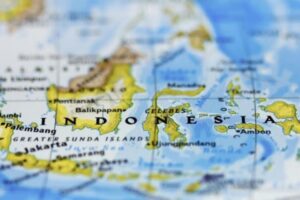Indonesia is a very large island nation in the world with all its potential. Do you believe that since then our archipelago has been a great center of commerce and civilization?. In Majapahit times alone the power of the archipelago even reached Thailand. Our naval fleets have long been very strong and respected. This is what makes Indonesia the maritime axis of the world.
The maritime axis is a strategic idea that is realized to ensure connectivity between islands so that the flow of goods and services runs smoothly. There are five main pillars that make Indonesia the maritime axis of the world, namely:
- Rebuilding Indonesia’s maritime culture.
- Commitment to maintain and manage SDA with a focus on building marine food sovereignty through the development of the fishing industry by placing fishermen as the main pillars.
- Commitment to promoting infrastructure development and maritime conclusiveness by building sea tolls, seaports, logistics, and maritime shipping and tourism industries.
- Maritime diplomacy that invites all Indonesian partners to cooperate in the field of maritime affairs.
- Development of maritime defense forces
Indonesia’s success in maritime life must be achieved because Indonesia is the Atlantis that Plato wrote in his book centuries ago. Atlantis is a rich country, gemah ripah lohjinawi.
Indonesia must succeed at sea and on land, lest our wealth is utilized by other countries. There are two large parts that become the building element of the world’s maritime axis:
- The marine and maritime economic aspects as a mainstay asset of maritime shaft development and development. Aspects of the marine and maritime economy include fisheries resources, offshore oil and gas, seabed minerals, marine transportation, maritime industry, marine tourism, outer islands, coral reefs, and others.
- Aspects of the governance component to determine how aspects of the maritime and maritime economy can be managed and developed in the direction to realize the world’s maritime axis. These aspects include the arrangement of marine space, the arrangement of the sea flow of islands, sea surveillance, defense and security for the sovereignty of the NKRI, maritime culture, human resources, marine science, and the quality and supporting capacity of marine environment.
Indonesia’s current position is at the equator, which makes the country in the middle of the world. Therefore Indonesia is also known as the equatorial emerald because there are millions of potentials that are so impressive.







